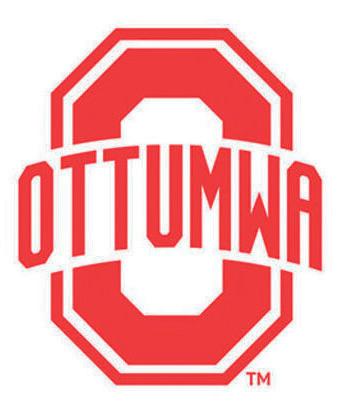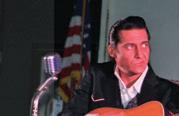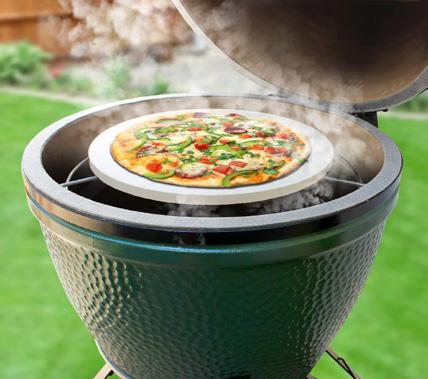








One of the top questions I receive as a financial advisor is, “What exactly do you do and how can you help someone like me?” If you’ve ever wondered the same thing, you’re not alone. The answer I give when I meet new people is this: Financial advisors are committed to helping individuals and families set and reach their financial goals. Advisors provide value beyond investment strategies and financial advice; they are there to help clients feel more financially confident for the expected and unexpected moments of life. Here are some specific ways you can benefit from this professional relationship:
Personalized advice. There’s no “one size fits all” financial plan. A financial advisor can help you evaluate your current circumstances to create a plan of action specific to your goals and concerns. You don’t have to achieve a certain level of wealth or have complex finances to enlist their services. Financial advisors are equipped to serve you, whether you are starting out in your career, in the middle of your working years, entering retire

ment or if you’re already retired.
Investment strategies, product recommendations and more. A financial advisor will suggest ways to move forward based on your short-, medium-,and long-term financial goals. Investment strategies will vary based on your time horizon—the years ahead of you in which you have to reach your goals. Your advisor may recommend a balance of stocks, bonds and other solutions aligned to your risk tolerance. You may be advised on ways to optimize your tax situation, which can include investing in accounts that offer tax advantages, such as a Roth or traditional IRA, Health Savings Account, or 529 plan. You can expect an advisor to review insurance coverage and other solutions to strengthen your financial safety net. Lastly, your financial plan may also include tips for saving and budgeting.
Confidence in your financial decision making. A financial advisor can be a sounding board as you move through life and experience events that impact your bottom line. You can ask your advisor for input on how a job change, large expenditure, or other financial commitment will affect your financial outlook. You can feel more secure about your charitable giving when it’s been incorporated into your overall
plan. Together you can adjust your investment strategies to accommodate life circumstances.
As a result, you will be able to make financial decisions knowing you have considered the larger picture.
Multi-generational support. A trusted financial advisor can be a resource for your entire family. Your goals may include caring for aging parents or putting kids through college. Your advisor can also educate you on a wealth of topics that impact your family’s financial wellbeing. These may include estate planning, wealth transfer, wills, health care directives, powers of attorney, trusts and beneficiary assignments. It’s never too early to introduce your adult children to your advisor and encourage them to make use of financial planning services. Financial advisors understand the values that drive you and can help instill these as your family forms their relationship to money.
Collaboration. In addition to providing consultation to you, your advisor can work directly with a tax preparer and estate attorney as needed. By keeping your advisor in the loop on tax and estate matters, you can be assured of comprehensive professional support.
Ongoing advice for your changing circumstances. Life happens. Goals change. Markets fluctuate. In a constantly changing world, a lasting relation-
ship with a financial advisor allows you to work in tandem with a partner you trust to navigate all that life will throw your way.
Duane J Lusson, CFP, ChFC, CLU, MSFS, is a Private Wealth Advisor with Ameriprise Financial Services, Inc. in Ottumwa, Iowa. He specializes in fee-based financial planning and asset management strategies and has been in practice for 30 years. To contact him, call 641-684-4200 or stop by his office at 527 W. Second in Ottumwa, Iowa.
Ameriprise Financial, Inc. and its affiliates do not offer tax or legal advice. Consumers should consult with their tax advisor or attorney regarding their specific situation
Stock investments involve risk, including loss of principal. Highquality stocks may be appropriate for some investment strategies. Ensure that your investment objectives, time horizon and risk tolerance are aligned with investing in stocks, as they can lose value.
There are risks associated with fixed-income investments, including credit risk, interest rate risk, and prepayment and extension risk. In general, bond prices rise when interest rates fall and vice versa. This effect is usually more pronounced for longer term securities.
The initial consultation provides an overview of financial planning concepts. You will not receive written analysis and/or recommendations.
Investment products are not insured by the FDIC, NCUA or any federal agency, are not deposits or obligations of, or guaranteed by any financial institution, and involve investment risks including possible loss of principal and fluctuation in value.
Investment advisory products and services are made available through Ameriprise Financial Services, LLC, a registered investment adviser.
Ameriprise Financial cannot guarantee future financial results.
Securities offered by Ameriprise Financial Services, LLC. Member FINRA and SIPC. © 2024 Ameriprise Financial, Inc. All rights reserved. File # 6217574.1










$49.75, $59.75


Texas Tenors Saturday, December 14 | 7:00pm $59.75, $75






Floyd – A Tribute to Pink Floyd Saturday, January 11 | 7pm $19.75, $29.75, $34.75
One Night in Memphis Sunday, January 19 | 2pm $29.75, $39.75, $49.75










Cledus T. Judd Saturday, February 15 | 7:30pm $19.75, $24.75, $29.75 I Am He Said – Neil Diamond Tribute Saturday, February 22 | 7:30pm $39.75, $49.75
















My wife and I enjoy nature and watching the wildlife that surrounds us. Most of the time, there are no conflicts in our shared space, but not always. There are few things more disconcerting than going out to the trash cans and finding a week’s worth of trash scattered around the yard. We have lived in peace with the neighborhood raccoons with only an occasional battle over bird feed. This was mitigated by bringing the bird seed and grape jelly inside at night. I thought the raccoons could wander around at night and be available for our grandson, Zane, to train his coon hounds. The dogs track the raccoons and run them up a tree where Zane then rewards the dog for a job well done. The local raccoons make for an easy training run for both Zane and the dogs. With switching
their diets from bird feed to whatever can be found in the trash cans, the truce has been broken. He has now been instructed to dispatch the raccoons when treed anywhere near our house.
We are back on good terms with our resident rabbits. Protective fencing has been installed around everything we wish to keep from being eaten by them. This has been working well. On most Sunday mornings, Damon will stop by for coffee and bring his two beagles. While we enjoy time on the porch, the beagles will chase the rabbits from one patch of timber to the other near the house. The dogs get their exercise, and the rabbits seem to enjoy the chase as they go from place to place staying just ahead of the dogs. We enjoy watching the hunt and listening to the dogs hard at work. After an hour or so, the dogs will come to the porch to get a drink and rest for a while, happy in a job well done. Before long a rabbit will be back out in the driveway as though they are looking for the dogs to come back out and play.
The deer have been pushing the boundaries of the unspoken
truce. They have refrained from eating the flowers in the yard but have been working on my green beans. I am a patient and tolerant man but I do have my limits. We do not have a large garden or a wide selection of vegetables, but my wife and I are both partial to fresh green beans. I have the beans covered netting but only have moderate success with protecting the beans. Apparently, deer find green beans too tempting to pass up. They will nip off any leaves that manage to grow through the netting and each night, attempt to remove the protective cover. They are living on borrowed time. The truce will last until deer season opens. We will then be eating deer steak with the few green beans we are able to rescue from raiders.
My wife and I spend a lot of time outside on various projects enjoying the birds and animals we see while working. We just wish they would respect the boundaries of our relationship. Most of the time we can live and let live. At other times, there is an uneasy truce, hanging on precariously.
























Over the years, I have owned several different canoes. I bought my first when I was in my early twenties. It was a used, red Coleman-brand canoe with two paddles, I got it for a mere $40. Used Coleman canoes usually sold for over $100. I was so excited when I bought my canoe on that beautiful spring day that I failed to notice the red duct tape on the lower right side near the floor. As a matter of fact, I didn’t notice the duct tape until my feet were getting wet on our maiden voyage. What a bummer!
I took the canoe home, removed the red duct tape, and revealed a twoinch gaping hole. I guess that didn’t bother me so much, as I did not notice the same hole inside the canoe. (Red tape on a tan interior.) I cleaned the side of the canoe with lacquer thinner and covered it again with regular grey duct tape. (I was clean out of red.) But I was smarter than the snake oil salesman who sold me the watercraft; he applied his duct tape vertically.
First, I applied duct tape vertically over the hole. Then, a second layer horizontally to streamline as the boat passed through the water. Pretty clever. The tape worked well for about thirty minutes in the water, and then my first mate (my dog Harry) said, “Dad, I’m getting wet.” Time for a new plan, and I

had an idea.
I loaded the canoe into the back of my car: A 1970 Chevy Impala Kingswood Estate station wagon with real (fake) wood siding. With the seats down, the canoe would go in the back with only about six or seven feet hanging over the tailgate. I secured the canoe by tying it to the luggage rack on the car and fastened a red flag to the bow. I drove the canoe to Wapello County Tire to see my friend Gary Coberly.
I told Gary about the duct tape repair and that it didn’t work. “Duct tape will never hold water,” Gary said.
“Yes, I know that now,” I replied. “So, what if your tire guy put a rubber tire patch over the whole?”
“I don’t think it will hold,” Gary answered.
“I considered that,” I continued. “But what if we put a patch on the inside first and then another on the outside?”
Gary was understandably skeptical. “I guess you can try it, but I don’t think it will work.”
The tire guy agreed with Gary. “I don’t think it will work,” Todd said, “but it’s worth a try.” Todd didn’t have a patch large




enough to cover the hole, so he made two round patches from an old innertube. Each patch was large enough to overlap the hole by two inches. When Todd finished the repair, it sure seemed like the patch would hold.
I went into the office to ask Gary how much I owed him for the repair. “Take it out and try it,” Gary said. “And if you don’t drown when the canoe sinks, come back and pay me nine dollars.” We shared a good laugh about that.
Harry and I launched the canoe in the largest lagoon in Ottumwa Park. We went fishing for two or three hours, and the patch was as water-tight as a frog’s ears. (That’s not exactly how the old saying goes, but you get the point.)
The following day, I went to see Gary for two reasons: 1) to prove I was still alive and 2) to pay him the nine bucks I owed. Todd had successfully repaired the hole; the only problem was that it looked hideous, with a big black rubber patch on the red paint. Now that I knew the patch would hold, I began addressing the appearance.
I went to O’Hara Hardware and bought two small cans of spray paint: red for the outside and

Store Discounts • Bow Shoot • Foot Race For All Ages • Kids Barrel Train powered by a MINI STEAM ENGINE
641-722-3357 • 20927 ICE AVENUE •


IA 52537




tan for the inside. In my blissfully niave youth, I didn’t realize there were so many different shades of red and tan, but it still looked better than the black circles.
Harry and I enjoyed fishing in the canoe through the summer months. By fall, the patch was coming loose at the edges, allowing water to seep into the boat again.
I placed an ad in the Wapello County Shopper, “Coleman canoe in excellent condition other than the big hole in the side. $25.”
A man showed up at my house and examined the canoe’s hole. “Will you take $15,” he asked. I quickly added the numbers: $40 for the canoe, $2 for duct tape, $9 for the patch, and $3 for paint. $51 total.
“How about $20,” I countered. The man handed me a twenty, and I helped him load the canoe into the back of his pickup.
Over the next few years, I saw the man on occasion. He still had the canoe; he repaired the side properly with fiberglass and painted the whole canoe green; it looked very sharp! I only lost $31 on the old canoe, which was a good deal considering I used the canoe all summer long. I kept the paddles worth at least another $20; I would use them for my next canoe. But the next canoe was a

long time in coming.
I bought a new Kawasaki Jet Ski and several different fishing boats with motors and oars. The paddles sat in the garage – until I met my wife, Melissa.
Melissa appreciated nature and the outdoors as much as I did. We were dating only briefly before I bought an orange Coleman canoe. My old paddles were in the water once again.
On one of my most memorable dates with Melissa, we went to Lake Wapello. We paddled the canoe around the lake, enjoyed the scenery, and cast a few lines into the water. After fishing for a while, we enjoyed a nice picnic I had packed, then paddled to watch the sunset. It was a lot of fun.
We enjoyed canoeing and soon upgraded to a brand-new 16’ green Wenonah canoe. We looked at it together, and I bought it for Melissa’s 30th birthday. She named the canoe The Green Pearl – a take-off from Captain Jack Sparrow’s pirate ship, the Black Pearl. (Pirates of the Caribbean.) I sold the orange Coleman to my brother Dan, who still has the canoe at their lake house.
Melissa and I moved to Minnesota and began paddling lakes and riv-

(Just the Other Day cont’d from pg 6)
ers with my Uncle John and Aunt Di. We were planning our first canoe trip into the boundary waters; the only problem with the Green Pearl was its weight; she weighed in at a hefty ninety-two pounds, which was very heavy for portaging the canoe (Carrying the boat over my head while transitioning through the woods from one lake to the next.)
Uncle John found a good deal on a used Wenonah Kevlar canoe, an eighteen-footer weighing less than 50 pounds. The Kevlar canoe was also two feet longer than the Green Pearl, making it faster in the water. We bought the canoe and have been to the boundary water a few times; each time was a thrill. We kept the Green Pearl to let people use it when they would come to visit.
In addition to the enjoyment of paddling canoes into the boundary water, the fantastic scenery, fishing, and wildlife, I also enjoyed cooking over a small, Coleman LP gas camp stove. We had some delicious meals.
Melissa and I also enjoy grilling food at home and have owned a couple of gas grills. But they were cheaper grills and only lasted a few seasons –maybe four if we were lucky. We threw away our grill when we moved to Minnesota, unsure if it would survive the move. We would buy another grill once I built a deck at our new home. Melissa wanted a good grill this time, one that would last, but they were so expensive. My wife knew what
she wanted.
“A Weber Grill,” I stammered. “Are you serious? Do you know how much those cost?” Melissa justified that a Weber would be cheaper in the long run because Weber grills are very well built, they last forever, and parts are still available for grills that are 30 years old. But still, the initial cost.
“We should be able to sell the Green Pearl for about the same price as a new Weber Grill,” Melissa suggested. I wouldn’t say I liked the idea of selling the Green Pearl. It was our first brand-new canoe, and we purchased it together as a couple. But the Green Pearl wasn’t being used enough to justify keeping it either, so I agreed.
We ran an ad and sold the Green Pearl (in excellent condition, with no holes) to Owen, for almost enough to buy a new Weber Grill. Melissa wanted a green grill, but they were hard to find. Shortly after we started looking, Faron from Julie’s True Value Hardware called me. “They just got three green Weber’s in the warehouse in the model you want,” Faron reported, “But they won’t last long. Do you want me to order one for you?”
“Yes, please,” I said. “But mums the words – I’m going to surprise Melissa with the new grill for her birthday.”
Melissa and I were leaving town for her 36th birthday weekend of camping and canoeing. I arranged to have Faron deliver the grill to our house and put it on the



new deck. “There are no steps yet,” I told Faron. He assured me he could get the new Weber Grill on the deck.
When we returned home from our trip, Melissa was ecstatic to find a brandnew, shiny green Weber grill on our deck, for her birthday. Now, all I had to do was work on my grilling skills!
Over the years, I have learned the art of searing meat on the grill. I’ve also learned the purpose of those little round knobs on the front panel and the consequence of trying to cook meat on high from start to finish. I was getting better, but there was still much room for improvement. Finally, I bought a meat thermometer.
The meat thermometer was a great help, but difficult to use. I would probe a chicken thigh or steak, but by the time the thermometer gave me a reading, it was uncomfortably hot holding it over the grill. There had to be a better way.
I looked at thermometers that probe the meat being cooked and give a constant remote digital readout. I didn’t care how many chickens got blackened or steaks charred; I was not going to lay out the kind of cash they wanted for a remote gadget.
I had seen ads for instant readout meat thermometers. I was skeptical and, again, not willing to part with a C note and a half for a meat thermometer.
One day, I saw an online advertisement for an instant thermometer priced at just $59. That got my attention. I searched for the same brand name and looked for customer reviews, which were mostly good. Of course, once you’ve searched for an item, you will be bombarded with advertisements for similar products.
One day, an ad appeared: a digital meat thermometer for only 39 dollars. “It must be junk,” I said, but I still researched the brand for reviews. They seemed to be all good. A few days later, I saw an advertisement for the same brand: a Thermomaven F-1 Turbo for just $9.99 with free
shipping! Wow! “Even if it is junk, I’ve wasted more money on dumber things,” I said as I entered my card information. When the thermometer arrived, I couldn’t wait to try it; I went to Zup’s Foods and bought ribeye steaks.
I showed the new gadget to my wife. “It’s a Thermomaven F-1 Turbo,” I boasted. “It will read a temperature in a half second. Melissa rolled her eyes. Hmfph. “We’ll see if she’s still rolling her eyes when I grill some perfect steaks!”
I checked the temperature of the cold steaks: 45°. I seasoned the meat and let it warm to room temperature, 65°. I seared the steaks and then reduced the temperature, turning them every few minutes. I checked the temperature several times while grilling the steaks, and finally removed them at 150°. I covered the steaks with tin foil, allowing them to rest. The final meat temperature was 162° - I was impressed by how the device gave me a temperature within a split second. “This thing is pretty cool,” I said. The steaks were excellent! I put chicken on the grill the next night to ensure it wasn’t just a fluke. Perfect chicken, too! I wanted to test the Thermomaven F-1 Turbo even more – for accuracy.
I let the cold water run for a few moments, 52°. I poured a refreshing cup of cold water; no ice was needed. Next, I heard the buzzer sound off on the dryer. I ran to the basement and probed the clothes. 177° on low heat, but the readout was slower. I adjusted the heat setting to high and rechecked the clothes after 20 minutes. The F-1 Turbo was again reading more slowly but eventually, after poking the laundry several times, it climbed to 198°. “That’s not much difference,” I concluded something must be wrong with the dryer.
Later that day, I noticed the sleeves on my flannel shirt felt a little shorter, and several pin holes were in one of my good T-shirts. Oops. I should not check the laundry, but I couldn’t help myself. The wet clothes coming out of the washing machine were 63°. I was unstoppable!
I went out in the yard poking the probe into the ground about one inch; it was 68° in the morning, but by 2 p.m., the sun warmed the surface soil 72°. I checked the soil temperature in one of my potted apple trees; it was 75° and a little dry, so I would give it a drink of cool water. Water from the garden hose sitting in the sun was 138°- too hot for the apple trees, but after running for a bit, the water cooled to 62°. The apple trees appreciated the drink.
That night, Melissa was going to make a cup of tea. Once the tea kettle began whistling, I checked the steam; it was 240°, but the water poured into a cup only showed 228°. I wonder why that is? I made a cup of tea for myself using the microwave for 1:40 seconds, my water was only 167°. Did you know popcorn can exceed 300° when cooked in a silicone popcorn maker? Man, I was on a roll!
I placed the probe under my arm; I was only 92 °, but I registered 96° under my tongue, which is about one degree lower than usual. Who’s to say that the other thermometer is accurate?
Frozen fruit in the freezer was 1°, but the Bridgeman’s Salter Carmel Espresso ice cream was only 14°. I wonder if that’s like flooring? A ceramic tile floor will always feel colder barefoot than a wood or carpeted floor in the same house.
Our Weber grill is already ten years old, and works perfectly! Impressive. I’ve also been thoroughly impressed with my Thermomaven F-1 Turbo; I would recommend a Weber Grill, and a Thermomave F-1 Turbo one to anybody.
“What are you doing,” Melissa asked.
“I’m trying to check the inside temperature of the Weber grill when it’s in the sun, but not running.”
“Will you put that thing away?” Melissa quickly tired of me checking the temperature of everything in sight. Nova Mae and Edgar Allan have been staying closer to my wife lately. Again, I wonder why.
